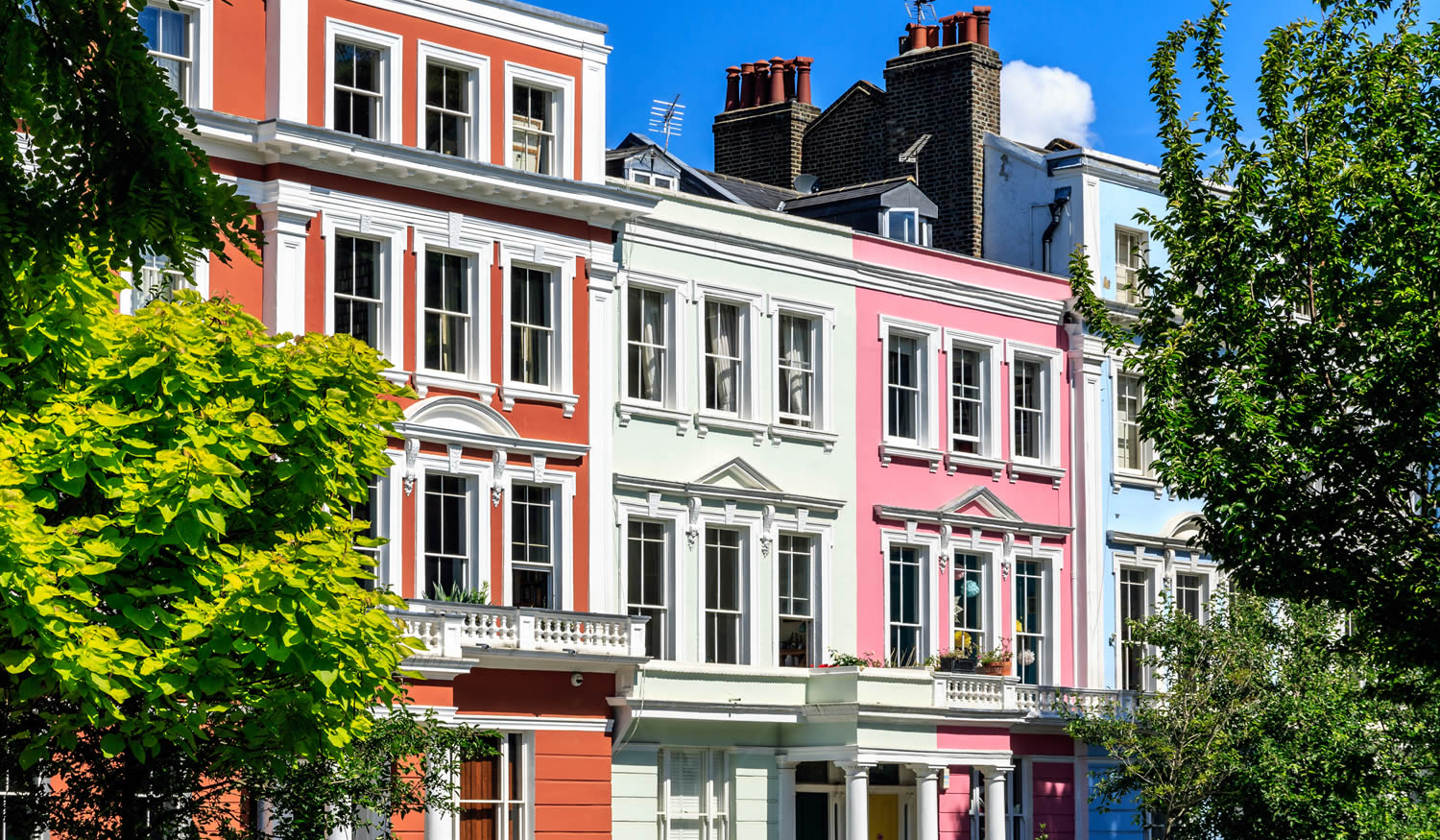
Alternatives to equity release
In the past people requiring extra income during retirement could take out an equity release plan with rates as high as 8.0% pa and interest would roll-up quickly eroding the equity.Rates of interest are no longer this high and the current competitive market means rates start at 2.5% pa although your need to have an acceptable property for equity release. Before considering equity release you can look at alternative ways of raising cash which may not require interest payments.
If your State pension no longer stretches as far the reason why you may need money would be to pay for daily expenses, clear debts, pay for an unexpected expense or to maintain your standard of living.
Ways of raising extra money
To generate cash for a specific reason without the need to pay interest, you could find you are entitled to claim state benefits or grants and it is worth contacting your local council of the Citizens Advice for more information.Alternatively you could make a list of your costs and expenses and re-budget your finances which could reduce the level of income you need. The following table is several keyways you could raise extra money rather than equity release.
| Ways to raise extra money |
|---|
| Downsize by selling your existing home |
| Use other savings or investments |
| Rent a room and take on tenants |
| Re-budget to live on less money |
| Your family could help with funds |
| Claiming grants or state benefits |
| Government rented homes |
| Move to live with family members |
Rather than using equity in your home, if you have savings you could use these first although it is important to retain some cash as an emergency fund.
Another popular option is to downsize to a smaller property, such as from a three-bedroom house to a two-bedroom flat. This can release equity which you can use to provide extra income although you need to be aware you would incur costs such as legal fees, arrangement fees, moving costs and stamp duty land tax.
Many people are reluctant to move home especially if this was the family home, if can be difficult to more to a new and unfamiliar area, you may not see your close friends as much and you have the risk of having new neighbours.
You could move home to live with family members which would release equity allowing you more retirement income which you can contribute to your new home.
Retirement interest only mortgages (RIO)
With an aging population retirement interest only mortgages were introduced in March 2018 offering greater flexibility over traditional residential mortgages and are authorised under lifetime mortgages by the regulator the FCA.Lenders of residential mortgages set upper age limits typically 70 and 75 years when the loan must be repaid and this can be difficult for older homeowners with an outstanding mortgage.
A retirement interest only mortgage can be used to release cash from your home and is similar to the residential mortgage, as you pay interest each month with the loan remaining the same until it is repaid. You are likely to have a preferential fixed rate for a limited period of time such as two or five years and interest can rise in the future.
Unlike a residential mortgage, for the RIO mortgage you must be aged 55 years and over to qualify and there is no end date for the mortgage, so it continues for your lifetime until death or entering long term care.
Provider fixed interest rates are higher than residential mortgages as the RIO mortgage has no term and is for your lifetime. For a two-year fixed mortgage, the interest rate is typically 3.2% pa and for five-year fixed this could be 3.6% pa.
You can borrow lump sum cash upfront up to 70% loan to value (LTV) although there is a requirement from the lender that you can afford the interest payments. For the RIO mortgage this is based on a stress test which assumes interest rates rise in the future.
You need to prove the level of your income for a single life and if this is a joint life the income of your partner after your death may be used for the application. All income sources can be considered including pensions, flexi-access drawdown and investments. This can often limit the loan to value making it difficult to borrow a large amount.
As with equity release plans, you can retain 100% ownership of your property and when finally sold the mortgage is repaid and equity balance paid to your estate.
The retirement interest only mortgage must be the first charge on a property and this means any existing mortgage must be repaid. It can also be used to access cash such as for home improvements, adding an extension, buying a new car, holiday of a lifetime or gifting to children and grandchildren to help them on the property ladder.
Home reversion plans
Home reversion plan have been around for a long time where you can sell all or a proportion of your property to a reversion provider that becomes a part owner of the property.If you sell all the property you may receive a larger proportion of the property value as a lump sum compared to equity release using a lifetime mortgage. There is no interest accumulating as there is no interest in the property in the future.
In this case the ownership of the property transfers to reversion provider and you become a tenant with a right to occupy subject to the terms of the tenancy agreement but typically until death or entry to long term care.
In the event of early death some reversion plans include a minimum inheritance guarantee which can return a capital payment to the estate. Generally, homeowners want to retain 100% ownership giving them the opportunity to benefit from rising house prices in the future and to leave equity to their family.
Downsizing your home and release cash
To release equity many people downsize from their current house to a smaller property such as a flat. This can be a cost-effective way of generating surplus cash although you may incur expenses such as costs for moving, stamp duty land tax, legal fees and redecorating.The risks of downsizing are you may have to move to a new area and unable to meet your friends as much as before, the area may not be as convenient for transport, shopping, recreation or entertainment facilities and you may not like your new neighbours.
If you have an existing interest only mortgage and downsize to repay the loan to the lender, you may find that the remaining equity is not sufficient. You cannot purchase the desired property you would like to maintain the standard of living and the equity will not provide any additional cash.
To buy a better property when you downsize, you can use equity release to repay your existing mortgage in full while the new lifetime mortgage gives you more equity for the property and cash.
For example, if you are aged 75 years with a property worth £375,000 and residential mortgage of £150,000 you are now required to repay the lender. You can stay in your existing home and release additional cash, say £30,000, and the loan to value is more than 45% and interest rate is 4.35% pa.
The table shows how you can use equity release when you downsize to buy a more desirable property. This assumes that once you sell your home and repay your mortgage, you have equity of £225,000 which is not enough to buy the property you would like without any additional cash.
It assumes you intend to have a loan to value of 35% to keep the interest lower with a proportion added the mortgage and the remainder in cash.
| Purchase value |
35% LTV |
Property |
Cash |
|---|---|---|---|
| £275,000 | £96,250 | £50,000 | £46,250 |
| £280,000 | £98,000 | £55,000 | £43,000 |
| £285,000 | £99,750 | £60,000 | £39,750 |
| £290,000 | £101,500 | £65,000 | £36,500 |
| £295,000 | £103,250 | £70,000 | £33,250 |
| £300,000 | £105,000 | £75,000 | £30,000 |
| £305,000 | £106,750 | £80,000 | £26,750 |
| £310,000 | £108,500 | £85,000 | £23,500 |
At LCM we can help you when planning using equity release to downsize and repay an existing mortgage at this link:
Free equity release quote to downsize and release cash.
If you only need £30,000 as a lump sum or drawdown cash over time, this means you can add £75,000 for a property worth up to £300,000 and maintain the same 3.95% pa interest rate. You can have a higher loan to value although the rates will increase.
To see if downsizing and releasing equity is right for you, speak to our expert advisers for further calculations before you make an application through LCM and ensure you are informed before making a decision about the best option.
Buying a dream home in retirement
People in retirement may have enough income to meet their daily expenses and pay for holidays but not have sufficient capital to buy their dream home.Your dream home could be to live in a larger property or improved quality of life such as warmer location, more sunshine, less traffic, cleaner air or different location such as moving to the coast or a national park.
Even though you do not have enough savings to add to your current property to buy your dream home, it is possible to relocate and buy a new property. You should be aware if you move home you would incur costs such as legal fees, moving costs and stamp duty land tax.
If you need large amounts of capital to trade-up you could approach family or friends to either lend you the money or invest in this new property taking a share of future proceeds when the property is sold. You could consider a retirement interest only mortgage, however, this may not offer a large enough loan based on your income.
Equity release using a lifetime mortgage does not require proof of income and is based on the property you intend to buy giving you additional leverage to trade-up to a more expensive home. There are other features of lifetime mortgages that offer you greater flexibility when it comes to managing the loan in the future.
For example, if you are aged 75 and own your property valued at £375,000 with no mortgage you can sell this home and buy a more expensive property. You may intend to keep the interest rate low and limit the loan to value to 30% with the option of a mortgage with cash.
The table shows how you can use equity release to buy a larger property or one in a better location. This assumes you have capital of £375,000 from the sale of your property.
| Purchase value |
30% LTV |
Property |
Cash |
|---|---|---|---|
| £475,000 | £142,500 | £100,000 | £42,250 |
| £480,000 | £144,000 | £105,000 | £39,000 |
| £485,000 | £145,500 | £110,000 | £35,500 |
| £490,000 | £147,000 | £115,000 | £32,000 |
| £495,000 | £148,500 | £120,000 | £28,500 |
| £500,000 | £150,000 | £125,000 | £25,000 |
| £505,000 | £151,500 | £130,000 | £21,500 |
| £510,000 | £153,000 | £135,000 | £18,000 |
Find out what dream home you can afford to buy and the equity you can release using this link:
Free equity release calculator with instant results for your dream home.
If you only need £18,000 in cash for the cost of moving or a drawdown facility this would mean you can add £135,000 to the property with a value of up to £510,000.
Although you could have a higher loan to value, this would mean the interest rate would be higher, reducing equity available to your beneficiaries. If you think you may receive an inheritance and intend to repay the mortgage early, you need to take account of the early redemption charges for the different types of plans.
Selling your property for £375,000 you could consider a loan to value of 47.3% releasing £325,000 so you can buy a property worth £700,000. The interest rate would be higher at 3.96% pa.
It is important to realise that buying your dream home you can still leave equity for your beneficiaries. If you use savings to pay for your moving costs, when you sell your home the equity is £375,000 and with a 30% loan to value or £155,000 mortgage you can buy a home worth £530,000.
The mortgage interest rate is 2.7% pa or £349 pm and to preserve the original equity of £375,000, house prices would need to rise at 0.93% pa to cover the roll-up interest. The majority of UK location have exceeded this as an average in the last ten years.
After you have completed the lifetime mortgage to buy your dream home, other options available would be a reserve facility to take additional cash in the future if you have a drawdown plan or if not, you could get a further advance if house prices rise.
Equity Release
EQUITY RELEASE PAGES
Equity Release Best Buys
These are examples of equity release products we can approach with many more offering interest rates and flexibility to meet your needs.
 |
| 2.75% Fixed Rate |
| Interest Roll-Up |
| 25% Loan to Value |
| £5 App Fee |
| 2.79% AER |
 |
| 2.60% Fixed Rate |
| Interest Roll-Up |
| 25% Loan to Value |
| £650 App Fee |
| 2.63% AER |
 |
| 2.44% Fixed Rate |
| Interest Roll-Up |
| 25% Loan to Value |
| £895 App Fee |
| 2.47% AER |
 |
| 2.60% fixed Rate |
| Interest Roll-Up |
| 25% Loan to Value |
| £629 App Fee |
| 2.63% AER |
Get started now with a
Free Equity Release Quote
As equity release advisers we can recommend products with the flexibility to meet your needs. Access your quotes via your dashboard to start your equity release application online 24/7 using a tablet or smartphone if you are on the move or from the comfort of your home.
GET YOUR FREE QUOTEThe latest mortgage news

Stamp duty holiday extension not being considered by government
The government is not considering a stamp duty holiday extension after calls for more time following the latest Coronavirus Tier 4 rules.

Fewer homeowners think their property has increased in value for November
For the month of November a survey from Halifax showed 14% of households believe the value of their homes has increased.

Slow demand for housing remains third higher than a year ago
Demand for housing is a third higher than a year ago although it has been slowing since the start of the stamp duty holiday.

Top 20 fastest selling locations when buying UK properties
It helps sellers and buyers if properties can sell fast and here are the results from Zoopla of the top 20 fastest selling UK homes.

New sellers price keenly to beat stamp duty holiday deadline
Lockdown demand remains high with new sellers pricing keenly to complete before the stamp duty holiday which ends next March.

Mortgage rates rise as number of deals fall with cautious lenders
Mortgages numbers have halved in the last three months and rates are higher as cautious lenders prepare for the end of the furlough scheme.

Housing boom sends asking prices to record highs
Post lockdown the UK housing market is in a mini-boom with asking prices at record highs and rising £7,640 this month.

Stamp duty holiday to save thousands on new house purchases
The Chancellor has launched a stamp duty holiday to help kick start the property market saving buyers thousands for a new home.

New sales agreed rebound strongly in Northern cities
The number of sales are 4% higher than the pre-lockdown level rebounding in the northern cities of Leeds, Sheffield and Manchester.

House prices firm with strong demand as housing market opens
As the housing market reopens there is demand with 5.2 million visits from prospective home movers supporting house prices.

Fixed rate mortgages fall to record lows with fewer products
Two and five year fixed mortgage rates have reduced to historic lows giving you the chance to save money by switching to a preferential rate.

Home buyers back to browsing property since Covid-19 lockdown
The number of hours home buyers spend online looking for property has increased since the lockdown with 40% rise in London.

Mortgage payment holidays given to 1.2 million homeowners
Lenders have agreed to give 1.2 million homeowners impacted by the Coronavirus crisis a mortgage payment holiday.

Fixed rate mortgage costs are lower as lenders withdraw products
The cost of fixed rate mortgages for borrowers has reduced but Coronavirus fears have seen lenders withdraw many products.

Buy-to-let landlords offered mortgage holidays if rent not paid by tenants
The Chancellor has extended the three-month mortgage holiday to buy-to-let landlords if tenants cannot pay rent due to Coronavirus.

Top 10 most valuable home improvements you can make revealed
Find out what are the top ten ways you can improve the quality of life that are also the most profitable home improvements.

Buy-to-let investors benefit from lower fixed mortgage rates
Fixed rate mortgage rates are reducing and set to fall further to the benefit of buy-to-let investors with more competition in 2020.

Urban green spaces can raise nearby house prices by £2,500, says ONS
Urban homes near public parks, gardens and playing fields are more expensive adding 1.1% premium to the value of your property.

Docklands in London attracts most demand as rental hotspot
Zoopla reveals the highest rental demand in London are for homes in Docklands which can benefit buy-to-let investors owners.

Top buy-to-let hotspots with the highest yields revealed
Falling house prices in the north has increased yields with Rochdale the best town for buy-to-let landlords.
Equity Release may involve a Lifetime Mortgage or a Home Reversion Scheme. To understand the features and risks, please ask for a personalised illustration. Equity Release may affect your entitlement to means tested state benefits and will impact on the size of your estate. For Equity Release London City Mortgages charge a fixed fee upon completion of £695. For Mortgages a fixed fee is charged on application. Typically this is from £295 up to £495 for the services selected.
Equity Release - Equity Released from your home will be secured against it. Mortgages – Your home may be repossessed if you do not keep up repayments on your mortgage or other loans secured against it. Think carefully before securing other debts against your home. The information contained in this website is subject to the UK regulatory regime and is therefore intended for consumers based in the UK.
CONTACT
Address:
9th Floor, 30 Crown Place
London, EC2A 4EB
Phone:
0800 955 0058
Email:
info@londoncitymortgages.co.uk
London City Mortgages Limited is a registered company in England & Wales under company number 09278987. London City Mortgages Limited is an Appointed Representative (FCA no. 655965) of Blackstone Moregate Limited (FCA no. 459051) which is authorised and regulated by the Financial Conduct Authority. LCM and LCM Equity Release are trading names of London City Mortgages Limited.
